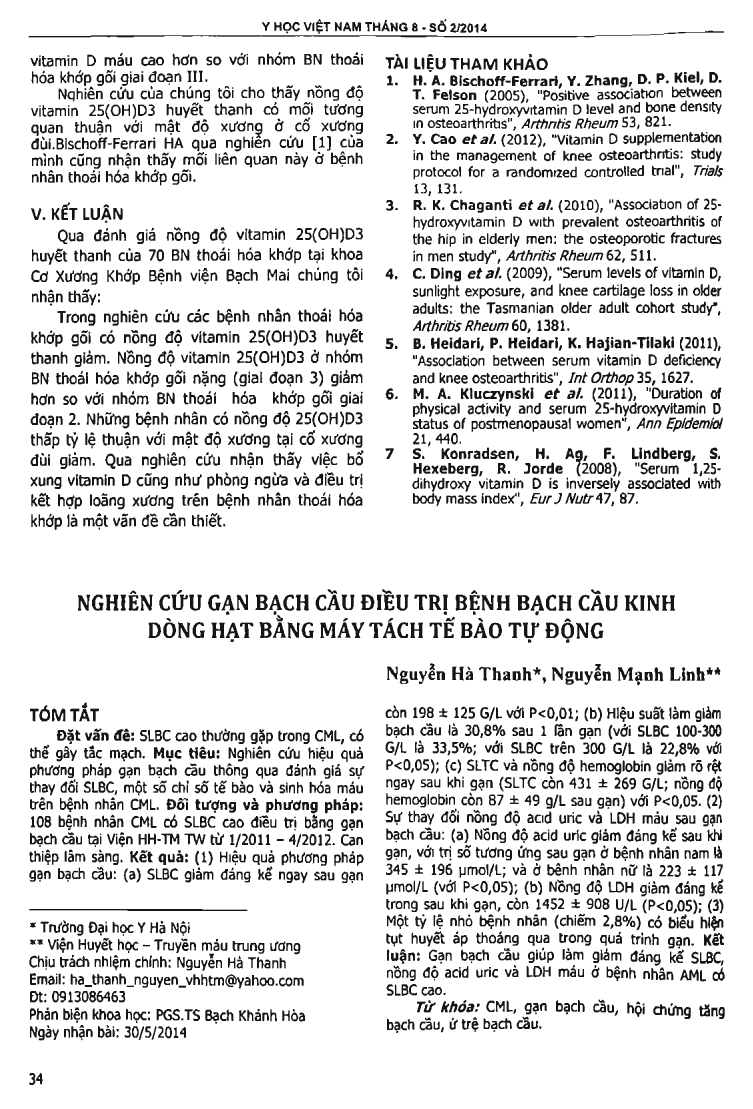
Background: Thrombosis is a common complication of hyperleukocytic CML. Purpose: To assess effectiveness of leukapheresis in term of reduction of WBC, other TBC indicators and biochemistry indicators in hyperleukocytic CML. Patients and methods: An intervention study was carried out on 108 CML patients treated with leukapheresis in NIHBT from 1/2011 to 4/2012. Results: (1) Effectiveness of leukapheresis in term of reduction of WBC, other TBC indicators and biochemistry indicators in hyperleukocytic CML: (a) WBC reduced significantly after leukapheresis (198 :I: 125 G/L with P0,01; (b) Cytoreduction effectiveness after leukapheresis is 30.8 percent (WBC 100-300 G/L 33.5 percent; WBC 300 G/L - 22.8 percent with P0,05); (c) Hemoglobin concentration and PLT count reduced after leukapheresis (PLT count - 431 + or - 269 G/L; hemoglobin - 87 + or - 49 g/L) with P0,05. (2) Change of blood uric acid and LDH concentrations after leukapheresis: (a) Uric acid concentration reduced significantly (P0,05) (345 + or - 196 umol/L for males; 223 + or - 117 umol/L for females, after leukapheresis); (b) LDH concentration reduced significantly (1452 + or - 908 U/L, after leukapheresis with P0,05). (3) Mild hypotension is observed on a small percentage of patients (2.8 percent). Conclusion: Leukapheresis is an effective supportive treatment for hyperleukocytic CML.
- Đăng nhập để gửi ý kiến
